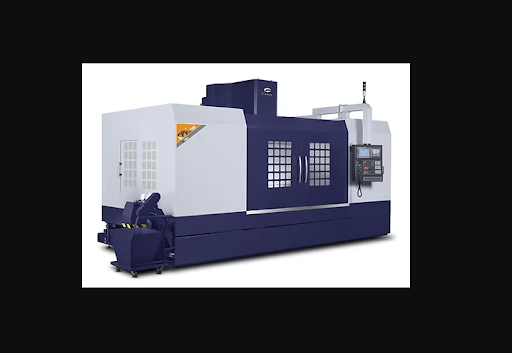The manufacturing industry is undergoing a significant transformation thanks to technological advancements in computer numerical control (CNC) machinery. Among these, the CNC turning center plays a pivotal role in enhancing precision, efficiency, and flexibility in metalworking processes. When combined with sophisticated equipment like the 5-axis vertical machining center and CNC vertical machining, these technologies are revolutionizing how manufacturers design and produce complex parts. This article explores how advanced CNC turning centers are shaping the future of manufacturing.
What Is a CNC Turning Center?
A CNC turning center is a machine tool that automates the process of rotating a workpiece while cutting tools shape it with extreme precision. Unlike traditional lathes, CNC turning centers offer computer-controlled operations, allowing for complex geometries and repeatability in mass production.
These machines are highly versatile and can handle various materials, including metals, plastics, and composites. The integration of computerized controls means less human intervention, fewer errors, and faster turnaround times.
Integration with 5-Axis Vertical Machining Centers
The emergence of the 5-axis vertical machining center complements the capabilities of CNC turning centers. While turning centers primarily rotate the workpiece, 5-axis machines manipulate the cutting tool along multiple axes, allowing for intricate and precise cuts from different angles.
This combination of technologies enables manufacturers to:
- Produce complex parts with tight tolerances
- Reduce the need for multiple setups and manual adjustments.
- Accelerate production cycles
- Achieve higher surface finish quality.
The synergy between CNC turning centers and 5-axis vertical machining centers leads to greater design freedom and manufacturing innovation.
Advantages of CNC Vertical Machining in Modern Manufacturing
CNC vertical machining provides several benefits that are essential in today’s competitive manufacturing environment:
- Enhanced Precision: CNC controls ensure accurate dimensions and repeatability.
- Improved Efficiency: Automation reduces manual labor and speeds up production.
- Flexibility: Capable of producing small batches or mass production runs without compromising quality.
- Complex Geometry Capability: Enables the creation of parts with intricate details and multiple surfaces.
These advantages help manufacturers meet demanding customer specifications and reduce production costs.
The Role of Advanced CNC Turning Centers in Industry 4.0
Industry 4.0 emphasizes smart factories where machines are interconnected and data-driven decision-making optimizes production. Advanced CNC turning centers are integral to this vision. Equipped with sensors, IoT connectivity, and real-time monitoring, these machines can predict maintenance needs, adjust operations for efficiency, and reduce downtime.
This connectivity allows manufacturers to:
- Track machine performance remotely
- Optimize production schedules dynamically.
- Minimize waste through precision machining.
- Increase overall equipment effectiveness (OEE)
Integrating 5-axis vertical machining center technology with CNC turning centers further enhances this smart manufacturing ecosystem.
Applications Across Various Industries
Advanced CNC turning centers paired with vertical machining capabilities find applications in multiple sectors, including:
- Aerospace: Producing lightweight, complex components with high strength requirements.
- Automotive: Manufacturing engine parts, transmission components, and custom accessories.
- Medical Devices: Crafting precision instruments and implants with tight tolerances.
- Electronics: Fabricating intricate housings and connectors with complex geometries.
These machines enable industries to innovate while maintaining high quality and regulatory compliance.
Future Trends in CNC Turning and Vertical Machining
The future of manufacturing with CNC technology points to several exciting trends:
- Increased Automation: Integration with robotic arms and automated loading/unloading systems.
- Artificial Intelligence: AI-driven process optimization for faster, smarter production.
- Hybrid Machines: Combining additive manufacturing (3D printing) with subtractive CNC machining in a single unit.
- Sustainability: Energy-efficient machines and processes that reduce environmental impact.
These innovations will continue to push the boundaries of what CNC turning centers and vertical machining can achieve.
Conclusion
The combination of cnc turning center, a 5-axis vertical machining center, and a CNC vertical machining represents the future of precision manufacturing. These advanced technologies bring unmatched precision, flexibility, and efficiency to the production floor. As manufacturers embrace Industry 4.0 and invest in smarter machines, CNC turning centers will remain central to driving innovation and maintaining competitiveness in a rapidly evolving market.

